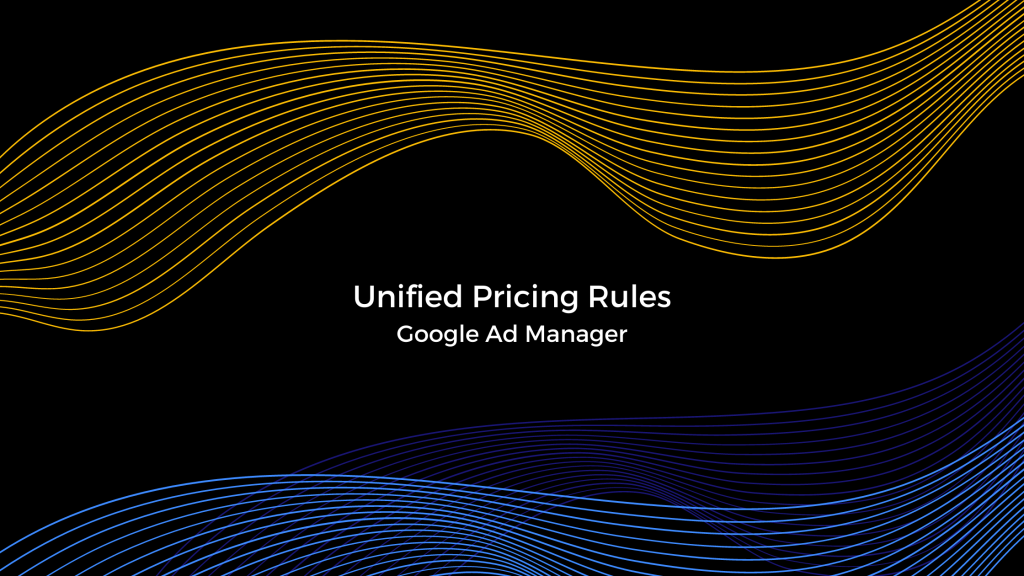In 2019 Google officially moved to a first-price auction. In addition to that, it also changed the way rules are being set in Google Ad Manager (GAM) and the old Pricing Rules were replaced by what Google calls Unified Pricing Rules (UPRs). They were created to simplify and centralize the process, and to create consistency in pricing across all channels. Through UPRs publishers can set common pricing rules for all indirect demand for their inventory from a single place within Google Ad Manager. This article will give you a better understanding of what UPRs are and how they are applied within GAM.
What are UPRs?
Unified Pricing Rules are a feature of Google Ad Manager that allows publishers to manage floor prices and target CPM across all available programmatic demand in a centralized way.
Google has listed the following scenarios where UPRs can be applied:
- The Open Auction via Authorized Buyers
- Private Auctions
- First Look demand
- Third-party exchanges that participate in Open Bidding
- Remnant line item types Price Priority, Network, and Bulk
- Ad Exchange linked accounts
- AdSense backfill (this was not part of the list when UPRs were introduced)
Then, there are certain contexts where UPRs are not applicable:
- Programmatic direct campaigns, including programmatic guaranteed (standard and sponsorship) and preferred deal line items
- House line items
- Line items with a zero (0) rate and no Value CPM set
- Line items with a CPD or CPA rate, which are treated as if they have a $0 rate
Publishers can use either hard floors or target CPMs as a UPR. Additionally, a limit of 200 UPRs per Ad Manager network is set by Google. This may be too low of a number for the largest publishers with plenty of direct sales, but if the rules are used in a smart way, grouping inventory with similar characteristics, there shouldn’t be an issue.
How Are Unified pricing rules Applied?
When there are a couple of UPRs that target the same ad units, the rule with the higher price applies. The same is valid for the Ad Exchange demand when a first look pricing rule and UPR overlap. In the case of a price priority, network, or bulk line item, the respective line item should have an equal or higher CPM to the UPR in order to compete in the bidding.
When dealing with multi-size pricing, there is an optional setting activated called “Pricing for everything”. As the name suggests, it applies to all ad unit sizes, regardless of whether or not you’ve set a price for them.
Unified pricing rules can be set for display and video creatives as well. However, publishers should be aware that floor/target CPM prices will still be valid across all ad formats in their inventory. The demand’s creative type will determine which floor/target CPM is in force. If the format cannot be determined (for instance, in header bidding), the rule for “display” creatives will be enforced.
Only Ad Exchange and open bidding demand can have advertiser- and brand-specific UPRs, however no per-buyer or per-bidder targeting. Remnant line items do not have this option, which essentially means that brand targeting is not available for header bidding within GAM.
Speaking of branding, it is important to know that Google removed the ‘anonymous’ branding type, which was available in the old pricing rules. This was done in order to comply with IAB standards for ads.txt disclosure.
Wrap up
Unified pricing rules allow publishers to set common pricing rules across all of their indirect inventory from a single location within Google Ad Manager. This means easy, centralized management of floors/target CPMs that provides consistency and simplicity. There’s a limit of 200 UPRs per Ad Manager network, which should be sufficient in the majority of cases. The general rule is that a higher price is applied for overlapping UPRs. No anonymous targeting, no per buyer or per bidder targeting is possible. Stay tuned for our detailed guide on UPRs, best practices, and tips.


